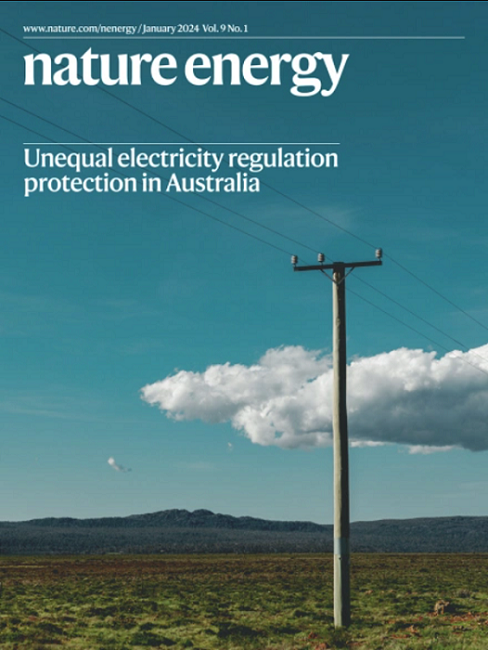Stacked for transparency
IF 60.1
1区 材料科学
Q1 ENERGY & FUELS
引用次数: 0
堆叠透明
半透明的有机太阳能电池适合作为发电元件集成到建筑物,汽车和温室等各种环境中。对于这些应用,一个重要的优点是光利用效率-定义为对可见光的透明度和功率转换效率的乘积。在这两个参数之间有一个权衡:具有强可见光吸收的材料(特别是电子供体聚合物)提供更高的功率转换效率。这种权衡使得提高光的利用效率具有挑战性。现在,苏州大学和中国科学院的陈海洋、朱娟、李耀文及其同事通过对电子给体聚合物的堆叠行为进行工程改造,提高了电荷传输效率,减少了可见光吸收,从而实现了超过6%的光利用效率。研究人员引入了一种添加剂,可以与电子供体聚合物形成氢键,抑制其聚集,有利于首尾滑动(或j型)堆叠结构。这种堆叠方式的特点是分子间共轭长度更长,既减少了可见光的吸收(提高了透明度),又有利于电荷的传输(提高了功率转换效率)。此外,添加剂提高了电子受体分子的结晶度,增加了其对近红外光的吸收,进一步提高了功率转换效率。通过加入光干涉层,研究团队实现了13.31%的功率转换效率和45.23%的平均可见光透过率,从而实现了6.02%的光利用效率。为了解决实际可行性,研究人员探索了他们的方法与大面积太阳能模块的兼容性,并进行了初步的植物生长实验。
本文章由计算机程序翻译,如有差异,请以英文原文为准。
求助全文
约1分钟内获得全文
求助全文
来源期刊

Nature Energy
Energy-Energy Engineering and Power Technology
CiteScore
75.10
自引率
1.10%
发文量
193
期刊介绍:
Nature Energy is a monthly, online-only journal committed to showcasing the most impactful research on energy, covering everything from its generation and distribution to the societal implications of energy technologies and policies.
With a focus on exploring all facets of the ongoing energy discourse, Nature Energy delves into topics such as energy generation, storage, distribution, management, and the societal impacts of energy technologies and policies. Emphasizing studies that push the boundaries of knowledge and contribute to the development of next-generation solutions, the journal serves as a platform for the exchange of ideas among stakeholders at the forefront of the energy sector.
Maintaining the hallmark standards of the Nature brand, Nature Energy boasts a dedicated team of professional editors, a rigorous peer-review process, meticulous copy-editing and production, rapid publication times, and editorial independence.
In addition to original research articles, Nature Energy also publishes a range of content types, including Comments, Perspectives, Reviews, News & Views, Features, and Correspondence, covering a diverse array of disciplines relevant to the field of energy.
 求助内容:
求助内容: 应助结果提醒方式:
应助结果提醒方式:


